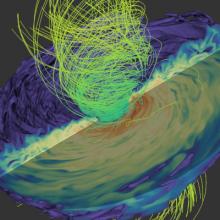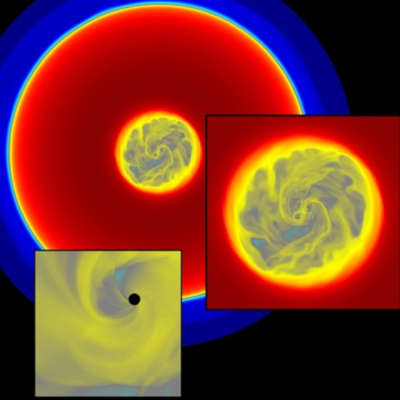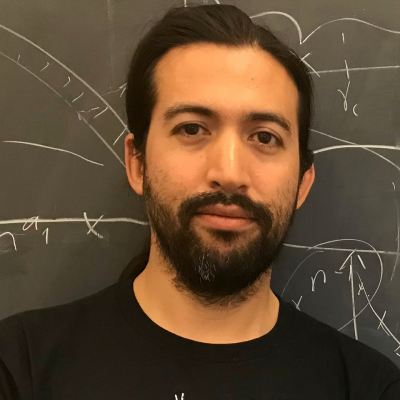

The process of accretion, matter falling onto a central gravitating body, couples vastly different scales in the universe. It is fundamental to the formation of stars and planets, the population of the cosmos by highly relativistic particles, the formation and evolution of galaxies and galaxy clusters, and the manifestation of the most extreme signatures of the gravitational force into signals astronomers can detect.
Our primary laboratories for studying the physics of accretion are black holes. When they are isolated and alone, they are nearly undetectable, but when gas and dust from the interstellar medium, a passing molecular cloud, or an unlucky nearby star comes too close to a black hole, it is shaped by gravity into a hot magnetized disk. Because of the compactness of black holes and other 'compact objects' like neutron stars, the plasma falling down to the object's horizon must release a tremendous amount of gravitational potential energy. Accretion disks are incredibly efficient at converting that energy into light spanning the entire electromagnetic spectrum, winds, and jets of streaming particles. This outgoing energy feeds back on the surrounding environment at much larger scales than the accretion is happening, but can impact the evolution of the largest objects in the universe.

At the CCRG physicists and astronomers are studying the fundamental physical processes key to our understanding of compact objects and accretion. Through the development of state of the art numerical tools, use of powerful supercomputers, and sophisticated visualization techniques they are studying all aspects of these multi-messenger systems. Professor Manuela Campanelli leads a group and a multi-institutional collaboration concentrated on relativistic magnetohydrodynamics simulations of gaseous environments around supermassive black holes. The project aims to calculate gravitational and electromagnetic radiative signals from astrophysical systems in which not one, but two compact objects accrete from a shared source of material.
Her PhD student, now a former postdoctoral researcher at CCRG, Dennis Bowen, performed the first ever 3-dimensional magnetohydrodynamic simulations of two supermassive black holes feeding on a shared accretion disk. These supermassive black hole binary systems are thought to exist in the centers recently merged galaxies, each contributing its central black hole which is millions or even billion times the mass of the sun. FGWA post-doctoral fellow, Mark Avara, is leading the development of the new PatchworkMHD code which will enable more accurate simulations of these systems, and evolve them 10's to 100's of times longer. He also studies self-consistently produced jets, winds, and radiation from single black hole systems. With many-orbit self-consistent simulations of accretion onto black hole binaries the CCRG is producing the first synthetic light curves for these systems which can be compared directly to interpret observations.
Accretion processes during the inspiral of two supermassive black holes can affect their orientation, spin, and orbit distribution during the onset of the final, gravitational-wave driven phase of their path towards merging into a single supermassive black hole.
The CCRG accretion and compact objects group, including Campanelli, Avara, and collaborators at several outside institutions, is working towards the ultimate goal of building a comprehensive model of the multi-messenger signals that LIGO, LISA, and EM observatories will receive from merging and accreting binary black hole systems.






